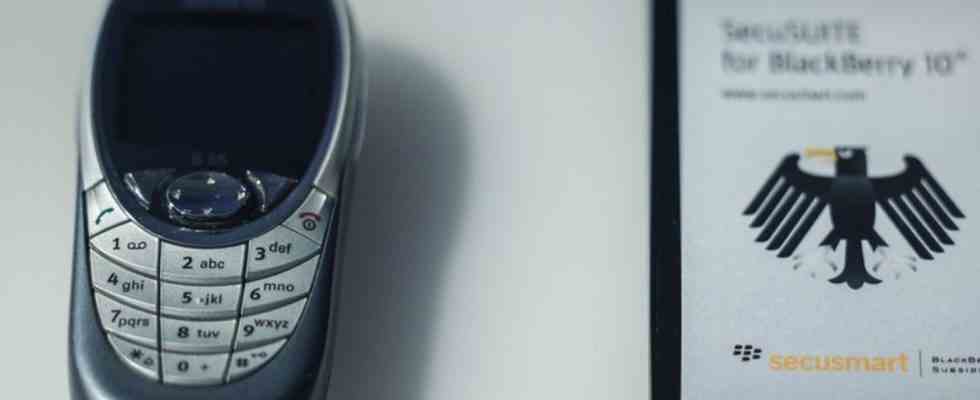#GermanyDigital
A button cell phone under glass – Digitization in the museum
Angela Merkel’s Nokia cell phone next to a tap-proof Blackberry. photo
©Oliver Berg/dpa
Digitization is now ready for the museum: for the first time, the House of History in Bonn is highlighting the World Wide Web, Big Data and artificial intelligence. Sometimes science fiction has become reality in a lifetime.
Hardly anything becomes obsolete as quickly as digital technology. Even a Nokia button cell phone can arouse nostalgic feelings. The new exhibition “#DeutschlandDigital” in the House of History in Bonn looks like a trip into the distant past – most of the exhibits are only a few years or at most decades old.
With more than 400 objects, photos and interactive media stations, the Museum for the History of the Federal Republic sheds light on the far-reaching effects of digitization. The oldest exhibits include a replica of the “first computer in the world” that was destroyed in the war and built by the engineer and inventor Konrad Zuse in 1941, and the original manuscript for a calculating machine from 1701. The polymath Gottfried Wilhelm Leibniz used it to explain his binary number system, the theoretical basis for later digitization.
The Commodore PET, which weighs almost 20 kilograms and was presented at the Hanover Fair in 1978, is a must, as is Super Mario, the hero of the Nintendo video game series. The first digital collection bag for contactless donations in the church can also be admired.
Chancellor’s mobile phone
The mobile phone that Angela Merkel used as CDU opposition leader until 2005 is on display under glass like a treasure. Even then she was bugged by the US secret service. “One of the significant features of Angela Merkel’s chancellorship was communication via SMS,” says museum director Harald Biermann of the German Press Agency. “It was a significant instrument of dominance. That wasn’t the case with Gerhard Schröder before, with Helmut Kohl it didn’t exist yet. Nothing has come out of Olaf Scholz so far, we’ll have to wait and see.”
Slightly older visitors may find that science fiction has become reality in their lifetime. Fans of the cartoon series “Captain Future”, which was shown on ZDF from 1980, remember the “flying brain” of the long-dead Professor Simon Wright, which flew in a special container on the spaceship. ESA astronaut Alexander Gerst actually had something similar with him on his space missions: the astronaut assistant “Cimon”, based on artificial intelligence (AI). He wasn’t quite as smart as Simon Wright, but he was able to help the astronauts with measurements and sing something. A very everyday example of AI is a profane vacuum robot, which is also on display.
“This is what a job killer looks like”
However, the show also reminds us that the beginnings of digitization were met with great skepticism, especially in Germany. In 1979, the DGB distributed a poster on which a microprocessor could be seen between two women’s fingers under the heading “Small causes – big effect”. “This is what a job killer looks like,” it said.
And further: “People play down the term ‘technical progress’. In plain language, that means nothing other than: Thousands of jobs are being rationalized away.” Looking back, it is downright touching that people still had the idea that they could stop the development if they wanted to.

